An Active Control with a Magnetorheological Damper for Ambient Vibration
Abstract
:1. Introduction
2. Passive Vibration Control System
2.1. Mathematical Model
2.2. Analysis of Displacement Transmissibility
3. Active Control Strategy
3.1. Sliding Mode Control
3.2. Active Control with a Magnetorheological Damper
4. Simulation
5. Conclusions
Author Contributions
Funding
Institutional Review Board Statement
Informed Consent Statement
Data Availability Statement
Acknowledgments
Conflicts of Interest
Abbreviations
| SMC | Sliding Mode Controller |
| QZS | Quasi-Zero Stiffness |
| MRD | Magnetorheological Damper |
| PD | Proportion Differentiation |
| PID | Proportion Integration Differentiation |
| FxLMS | Filtered-x Least Mean Square |
| LQR | Linear Quadratic Regulator |
| HRB | Hysteretic regularized Bingham |
| Kv (N/m) | The stiffness of the vertical spring |
| Kh (N/m) | The stiffness of the horizontal spring |
| c (N·s/mm) | The damping coefficient of the vertical damper |
| L0 (mm) | The initial length of the horizontal spring |
| L (mm) | The compressed length of the horizontal spring |
| a (mm) | The length of the connecting rod |
| d (mm) | The structural parameter |
| M (Kg) | The load mass (i.e., mass of the robotic machining system) |
| X (mm) | The displacement from the static equilibrium position |
| z (mm) | The amplitude of the harmonic excitation |
| Fa (N) | Approximate elastic restoring force of the system |
References
- Alabuzhev, P.; Gritchin, A.; Kim, L. Vibration Protecting and Measuring Systems with Quasi-Zero Stiffness; CRC Press: New York, NY, USA, 1989; pp. 10–54. [Google Scholar]
- Carrella, A.; Brennan, M.J.; Waters, T.P. Static analysis of a passive vibration isolator with quasi-zero stiffness characteristic. J. Sound Vib. 2007, 301, 678–689. [Google Scholar] [CrossRef]
- Carrella, A.; Brennan, M.J.; Waters, T.P.; Lopes, V., Jr. Force and displacement transmissibility of a nonlinear isolator with high-static-low-dynamic-stiffness. Int. J. Mech. Sci. 2012, 55, 22–29. [Google Scholar] [CrossRef]
- Li, Y.; Xu, D. Vibration attenuation of high dimensional quasi-zero stiffness floating raft system. Int. J. Mech. Sci. 2017, 126, 186–195. [Google Scholar] [CrossRef] [Green Version]
- Sun, Y.; Gong, D.; Zhou, J.S.; Sun, W.J.; Xia, Z.H. Low frequency vibration control of railway vehicles based on a high static low dynamic stiffness dynamic vibration absorber. Sci. China Technol. Sci. 2019, 62, 60–69. [Google Scholar] [CrossRef]
- Zhao, Z.M.; Wei, K.; Ren, J.J.; Xu, G.F.; Du, X.G.; Wang, P. Vibration response analysis of floating slab track supported by nonlinear quasi-zero-stiffness vibration isolators. J. Zhejiang Univ.-Sci. A 2021, 22, 16. [Google Scholar] [CrossRef]
- Zhai, X.; Luo, Y.J.; Zhang, Y.H.; Xie, S.L. Fuzzy PD hybrid control of low frequency vibration of annular antenna. Proc. Inst. Mech. Eng. G J. Aerosp. Eng. 2021, 235, 718–726. [Google Scholar] [CrossRef]
- Chen, L.J.; Che, B.H.; Huang, Y.; Zhu, M.G.; Yang, T.J.; Zhong, C.W. Active Vibration Control Mrthod for Test Model in Low Speed Wind Tunnel. J. Nanjing Univ. Aeronaut. Astronaut. 2021, 53, 7. [Google Scholar] [CrossRef]
- Giorgio, I.; Vescovo, D.D. Energy-based trajectory tracking and vibration control for multilink highly flexible manipulators. Math. Mech. Complex Syst. 2019, 7, 159–174. [Google Scholar] [CrossRef] [Green Version]
- Wang, J.M.; Kong, Y.F.; Huang, H. Cooperative control for vibration isolation and suppression based on Stewart platform. J. Vib. Shock 2019, 38, 9. [Google Scholar] [CrossRef]
- Wang, C.X.; Xie, X.L.; Chen, Y.H.; Zhang, Z.Y. Investigation on active vibration isolation of a Stewart platform with piezoelectric actuators. J. Sound Vib. 2016, 383, 1–19. [Google Scholar] [CrossRef]
- Yi, S.C.; Yang, B.T.; Meng, G. Microvibration isolation by adaptive feedforward control with asymmetric hysteresis compensation. Mech. Syst. Signal Process. 2019, 114, 644–657. [Google Scholar] [CrossRef]
- Wen, R.W. Micro Vibration Isolation Technology for Large Precision Instrument System Based on the Principle of Active Negative Stiffness. Doctoral Thesis, Harbin Institute of Technology, Harbin, China, March 2015. [Google Scholar]
- Sun, X.Q.; Yang, B.T.; Zhao, L.; Sun, X.F. Optimal design and experimental analyses of a new micro-vibration control payload-platform. J. Sound Vib. 2016, 374, 43–60. [Google Scholar] [CrossRef]
- Pan, G.Y.; Ghen, L.; Li, D.; Xiao, W.Q. Active isolation unit for the micro-vibration control. J. Vib. Shock 2018, 37, 227–230+261. [Google Scholar] [CrossRef]
- Han, C.; Choi, S.B.; Lee, Y.S.; Kim, H.T.; Kim, C.H. A new hybrid mount actuator consisting of air spring and magneto-rheological damper for vibration control of a heavy precision stage. Sens. Actuator A Phys. 2018, 284, 42–51. [Google Scholar] [CrossRef]
- Ma, T.; Bi, F.R.; Wang, X.; Tian, C.F. Optimized Fuzzy Skyhook Control for Semi-Active Vehicle Suspension with New Inverse Model of Magnetorheological Fluid Damper. Energies 2021, 14, 1674. [Google Scholar] [CrossRef]
- Li, G.; Ruan, Z.Y.; Gu, R.H.; Hu, G.L. Fuzzy Sliding Mode Control of Vehicle Magnetorheological Semi-Active Air Suspensio. Appl. Sci. 2021, 11, 10925. [Google Scholar] [CrossRef]
- Zhang, N.; Zhao, Q. Back-Stepping Sliding Mode Controller Design for Vehicle Seat Vibration Suppression Using Magnetorheological Damper. J. Vib. Eng. Technol. 2021, 1–18. [Google Scholar] [CrossRef]
- Zhao, Y.L.; Alashmori, M.; Bi, F.R.; Wang, X. Parameter identification and robust vibration control of a truck driver’s seat system using multi-objective optimization and genetic algorithm. Appl. Acoust. 2021, 173, 107697. [Google Scholar] [CrossRef]
- Liu, X.H.; Wang, N.N.; Wang, K.; Huang, H.; Li, W.H. Optimizing Vibration Attenuation Performance of a Magnetorheological Damper-Based Semi-active Seat Suspension Using Artificial Intelligence. Front. Mater. 2019, 6, 269. [Google Scholar] [CrossRef]
- Zhang, L.X.; Zhao, C.M.; Qian, F.; Dhupia, J.S.; Wu, M.L. A Variable Parameter Ambient Vibration Control Method Based on Quasi-Zero Stiffness in Robotic Drilling Systems. Machines 2021, 9, 67. [Google Scholar] [CrossRef]
- Shen, Y.J.; Wang, L.; Yang, S.P.; Gao, G.S. Nonlinear dynamical analysis and parameters optimization of four semi-active on-off dynamic vibration absorbers. J. Vib. Control 2012, 19, 143–160. [Google Scholar] [CrossRef]
- Sessa, S.; Vaiana, N.; Paradiso, M.; Rosati, L. An inverse identification strategy for the mechanical parameters of a phenomenological hysteretic constitutive model. Mech. Syst. Signal Process. 2020, 139, 106622. [Google Scholar] [CrossRef]
- Gołdasz, J.; Sapinski, B.; Jastrzębski, Ł. Assessment of the Magnetic Hysteretic Behaviour of MR Dampers through Sensorless Measurements. Shock. Vib. 2018, 2018, 3740208. [Google Scholar] [CrossRef]
- Arias-Montiel, M.; Floreán-Aquino, K.H.; Francisco-Agustín, E.; Piñón-López, D.M. Experimental Characterization of a Magnetorheological Damper by a Polynomial Model. In Proceedings of the 2015 International Conference on Mechatronics, Electronics and Automotive Engineering (ICMEAE), Cuernavaca, Mexico, 24–27 November 2015. [Google Scholar] [CrossRef]
- Soltane, S.; Montassar, S.; Mekki, O.B.; Fatmi, R.E. A hysteretic Bingham model for MR dampers to control cable vibrations. J. Mech. Mater. Struct. 2015, 10, 195–206. [Google Scholar] [CrossRef]
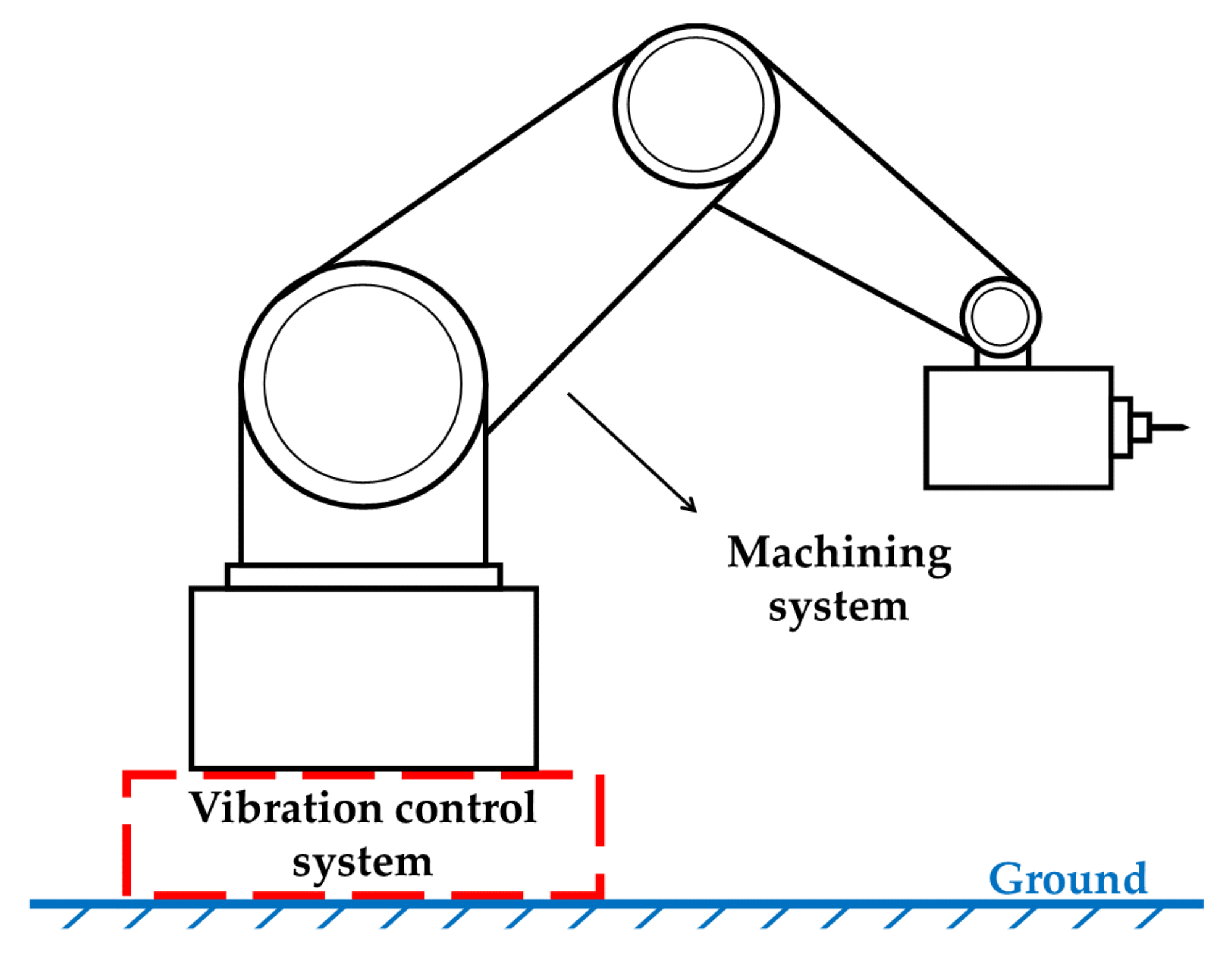




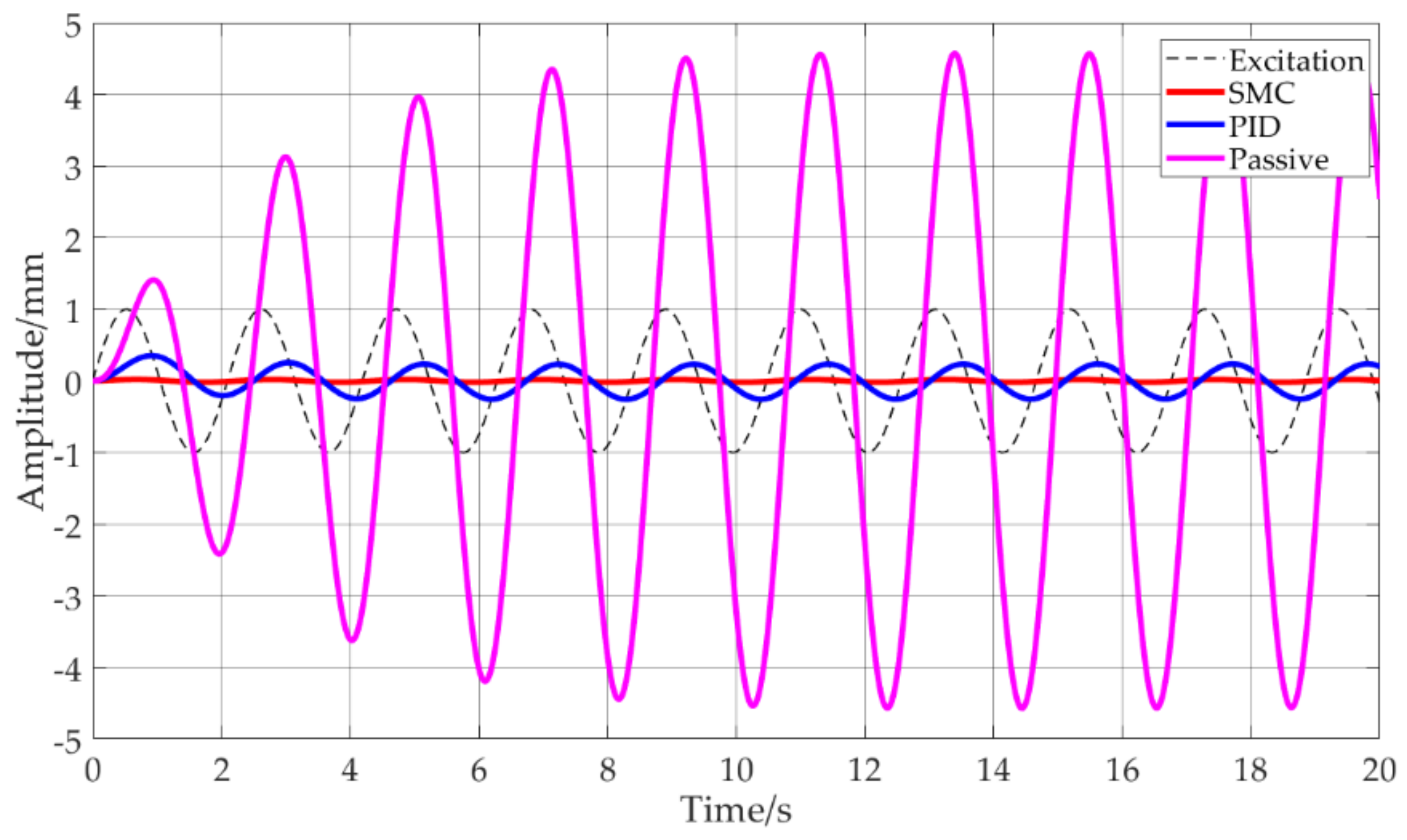
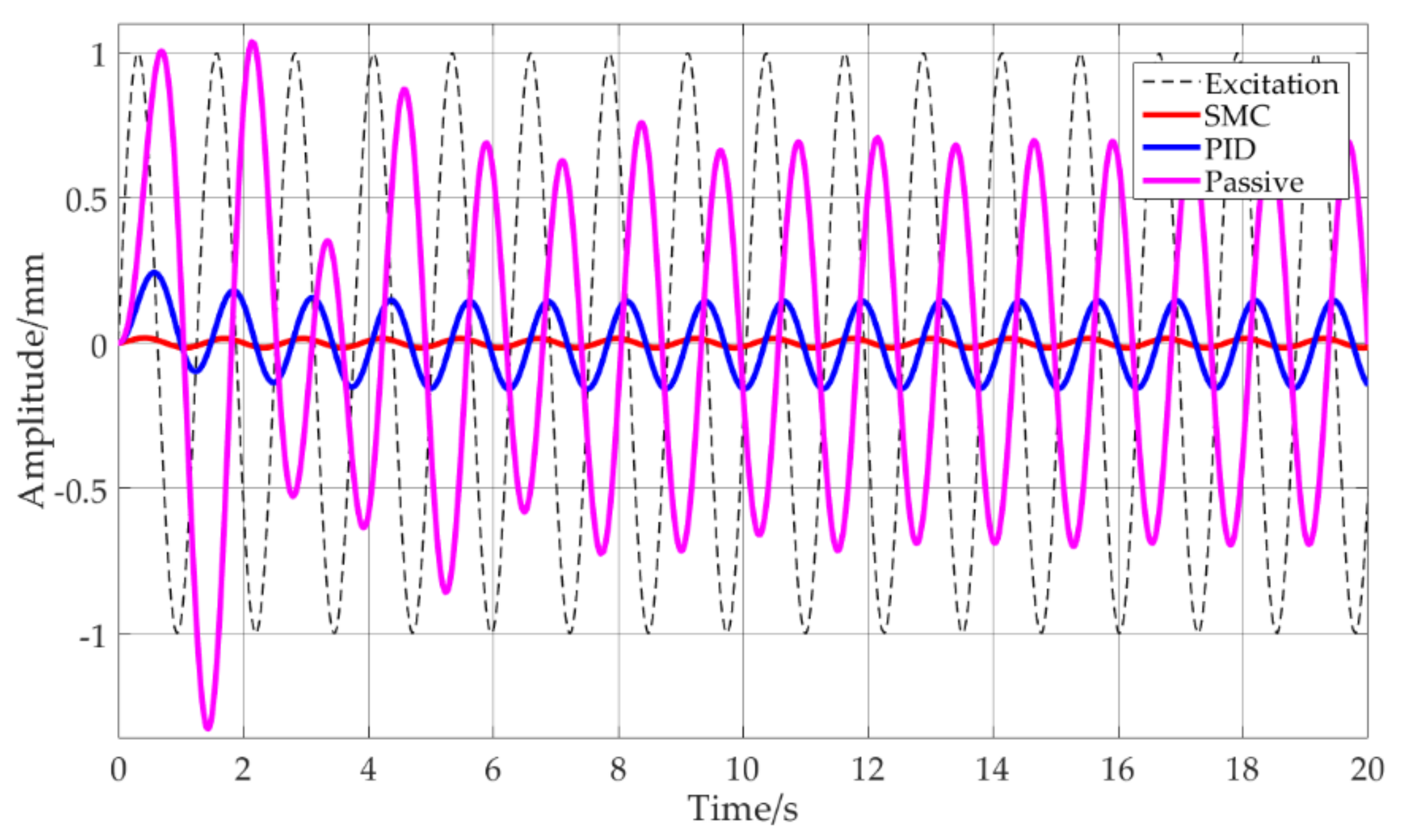
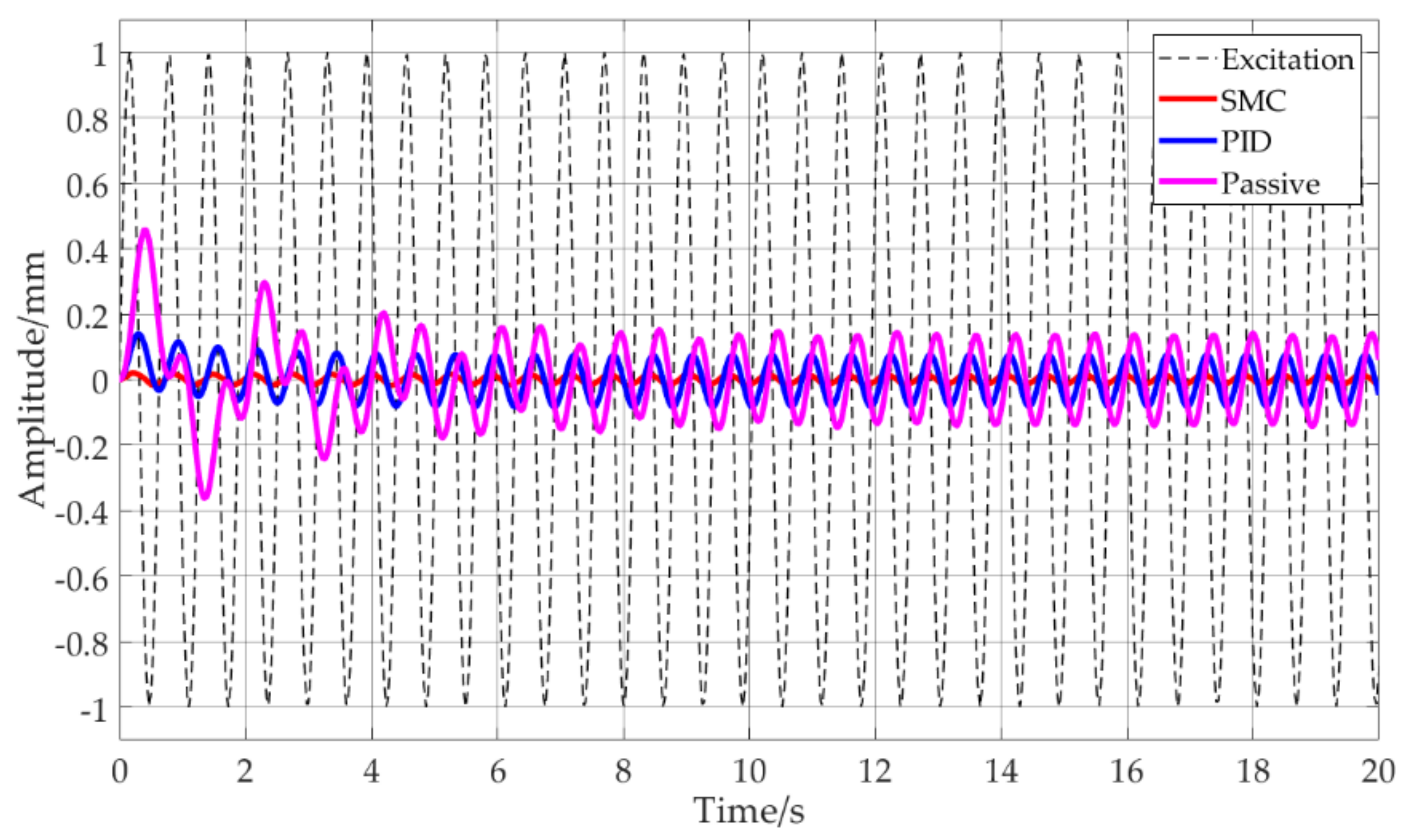

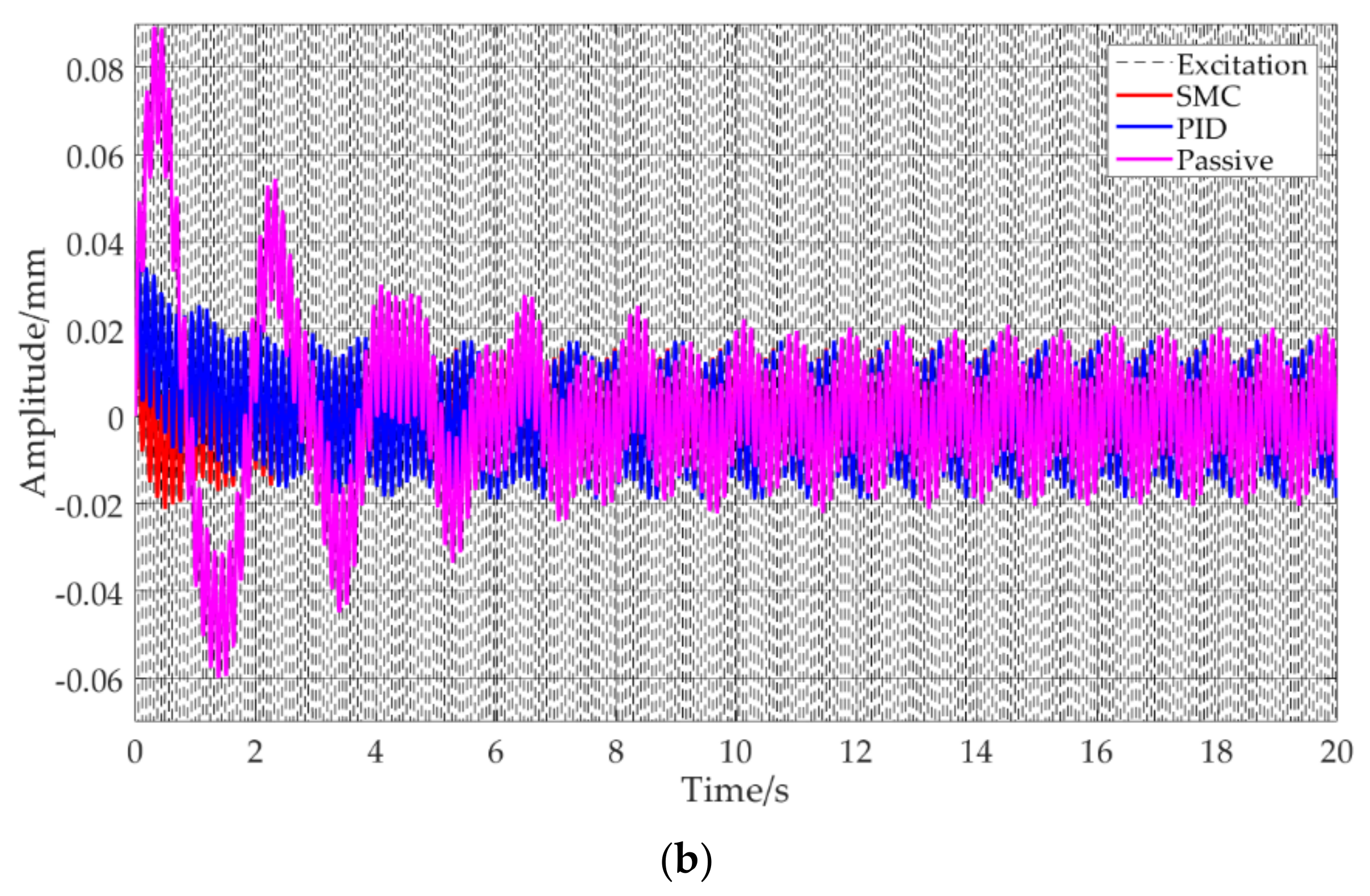

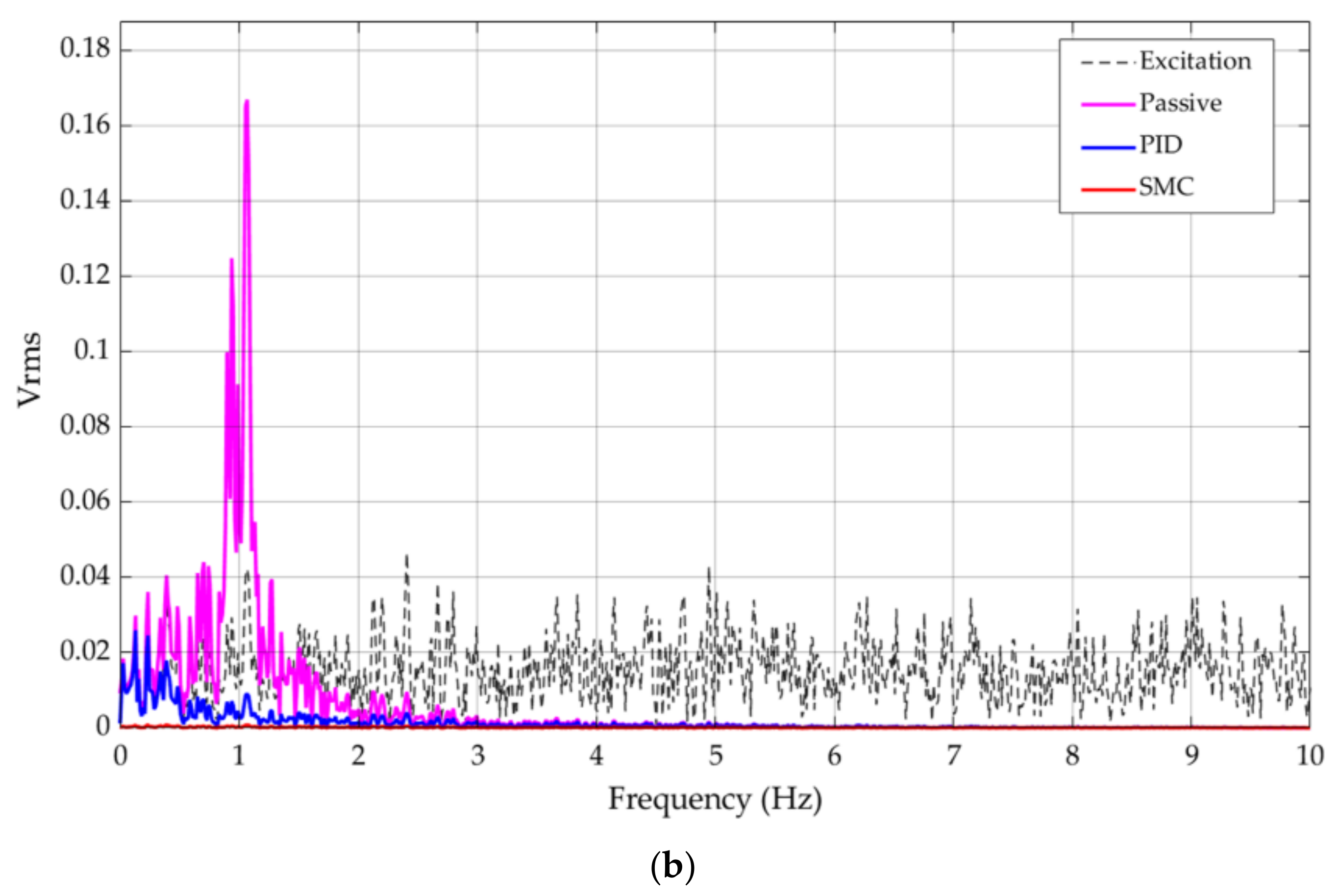
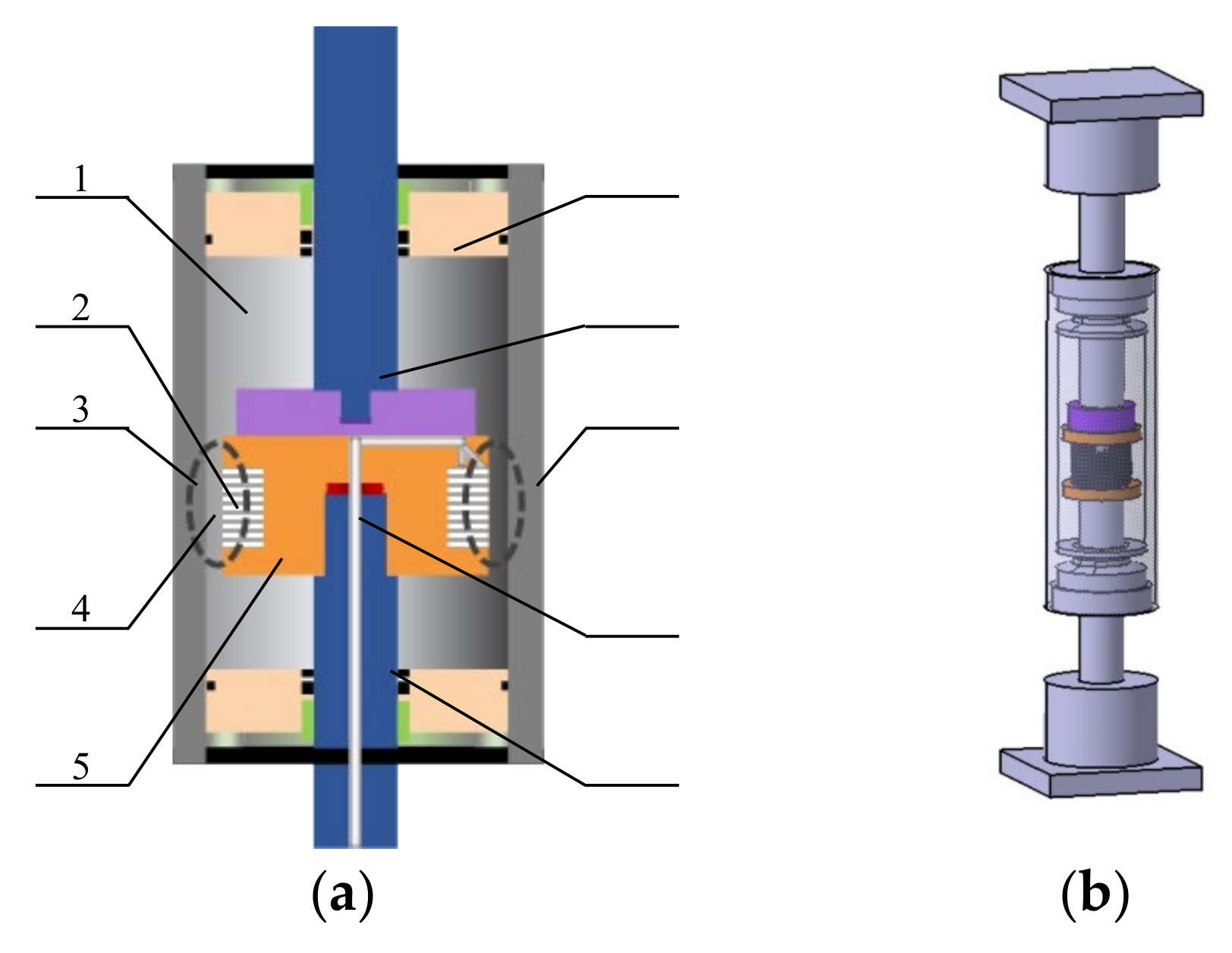
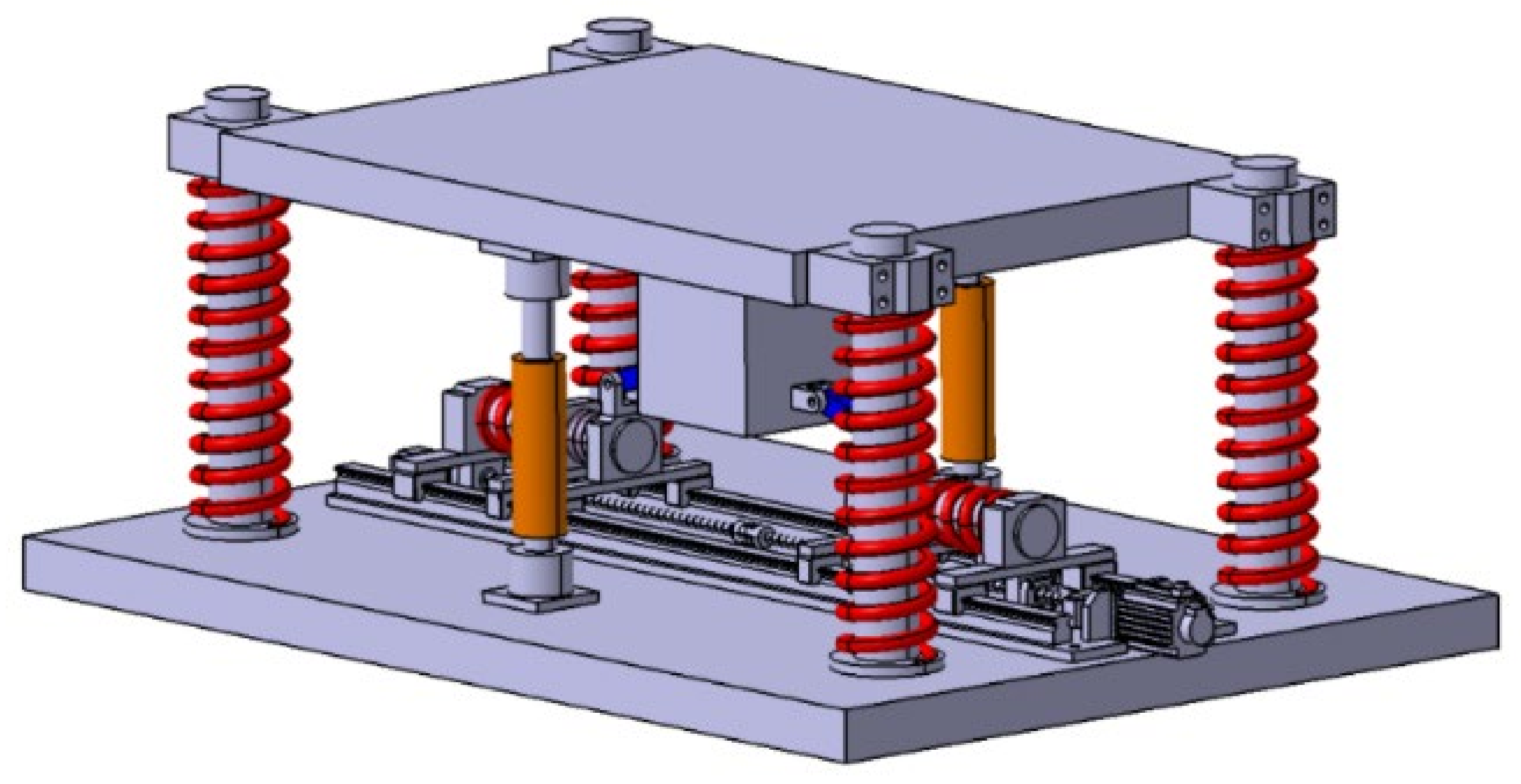



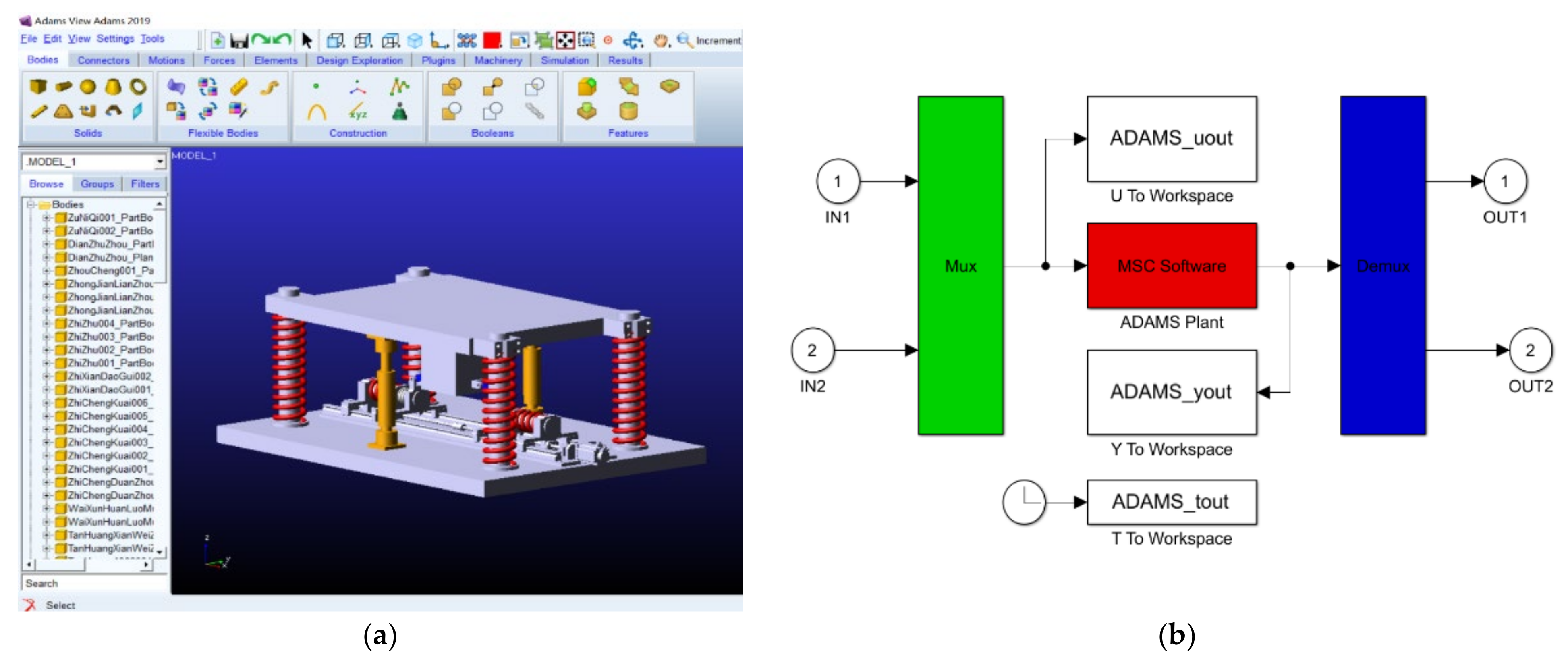

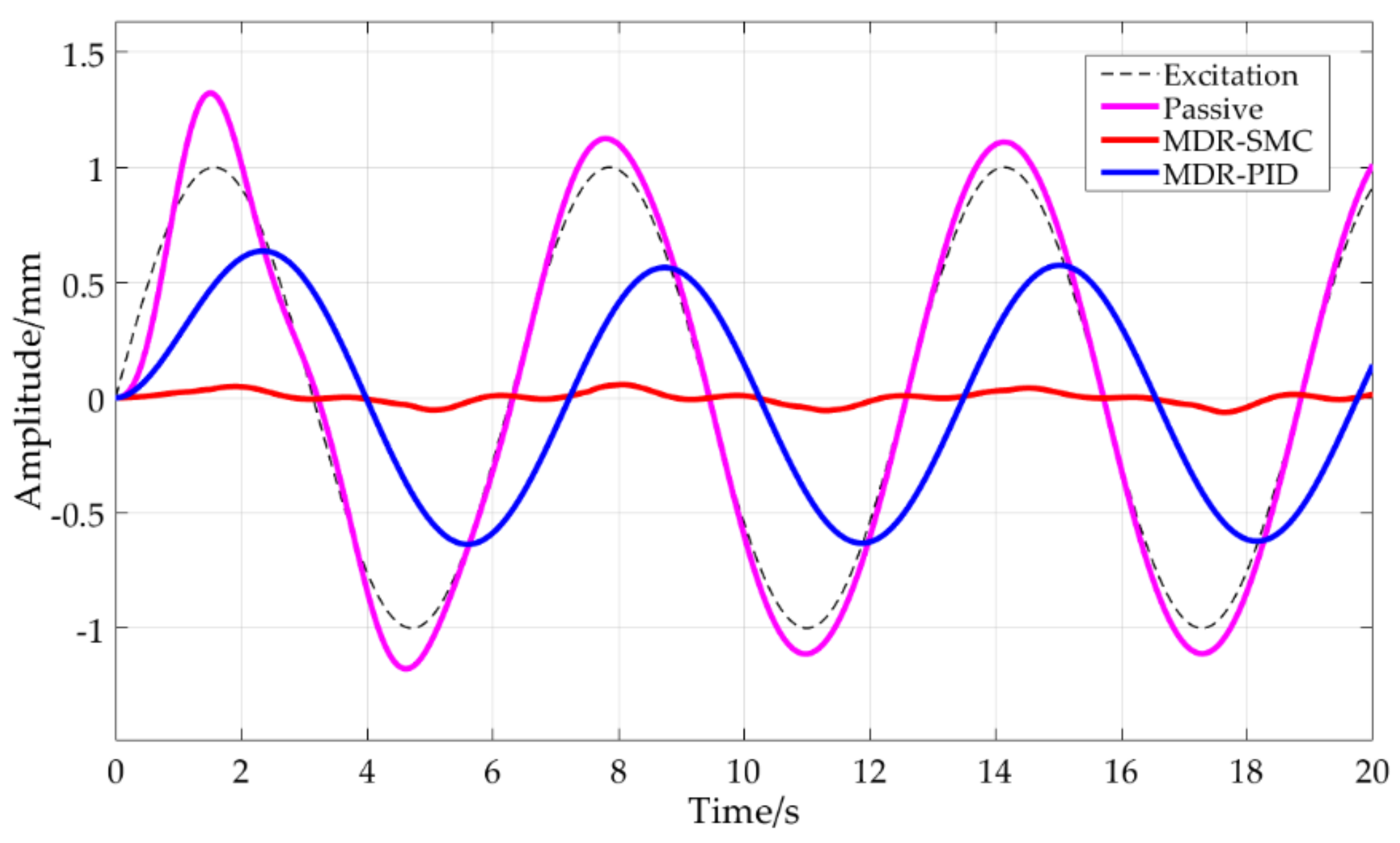

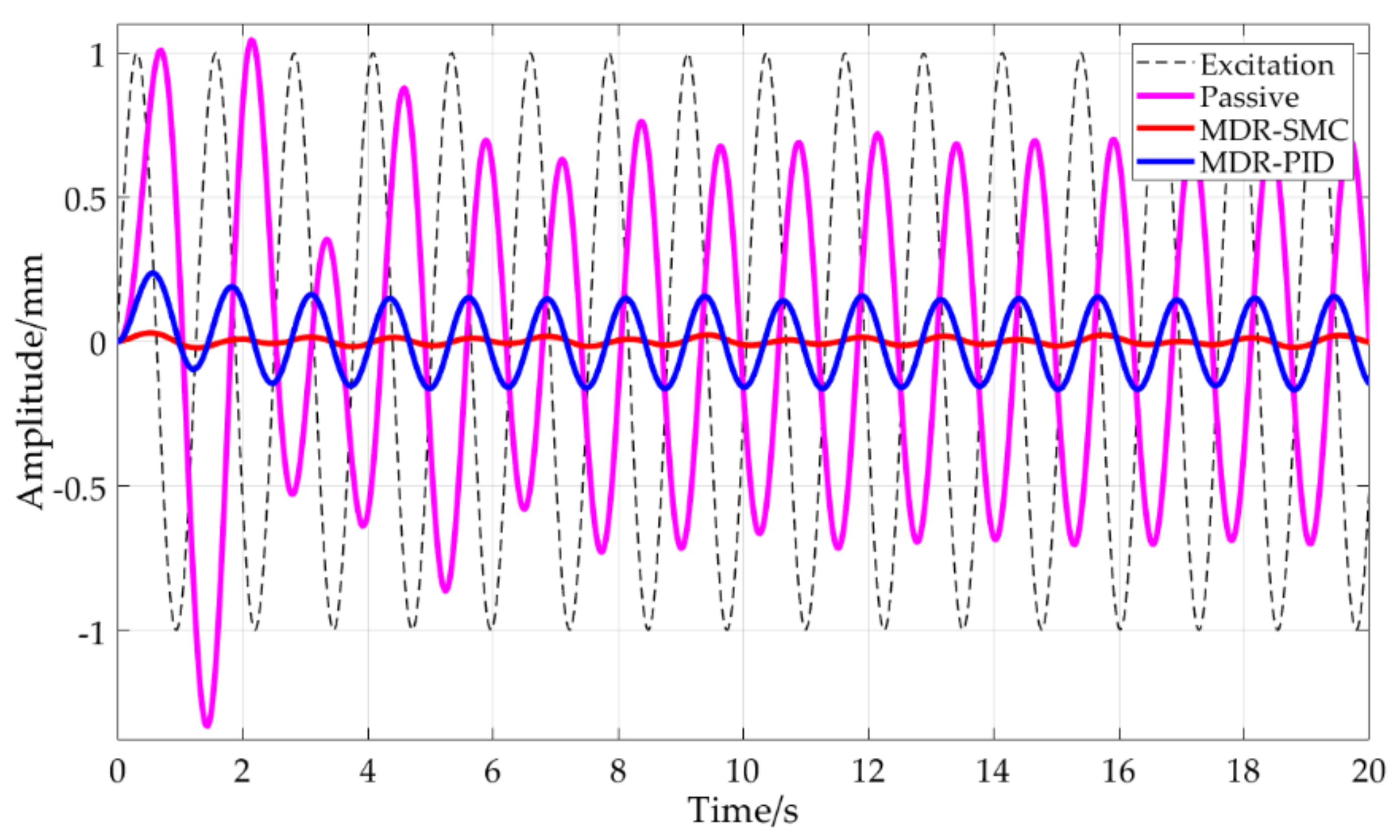
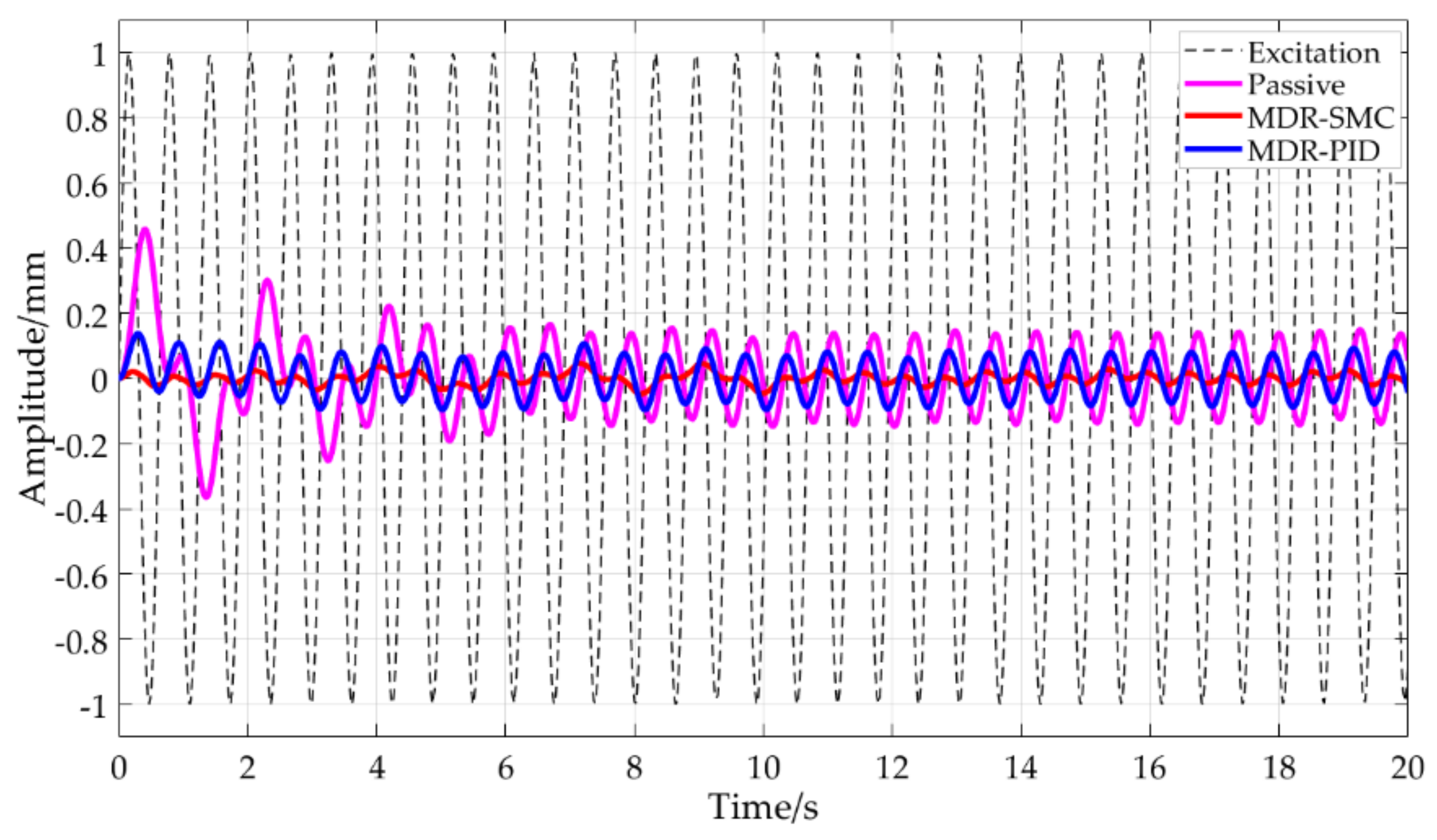

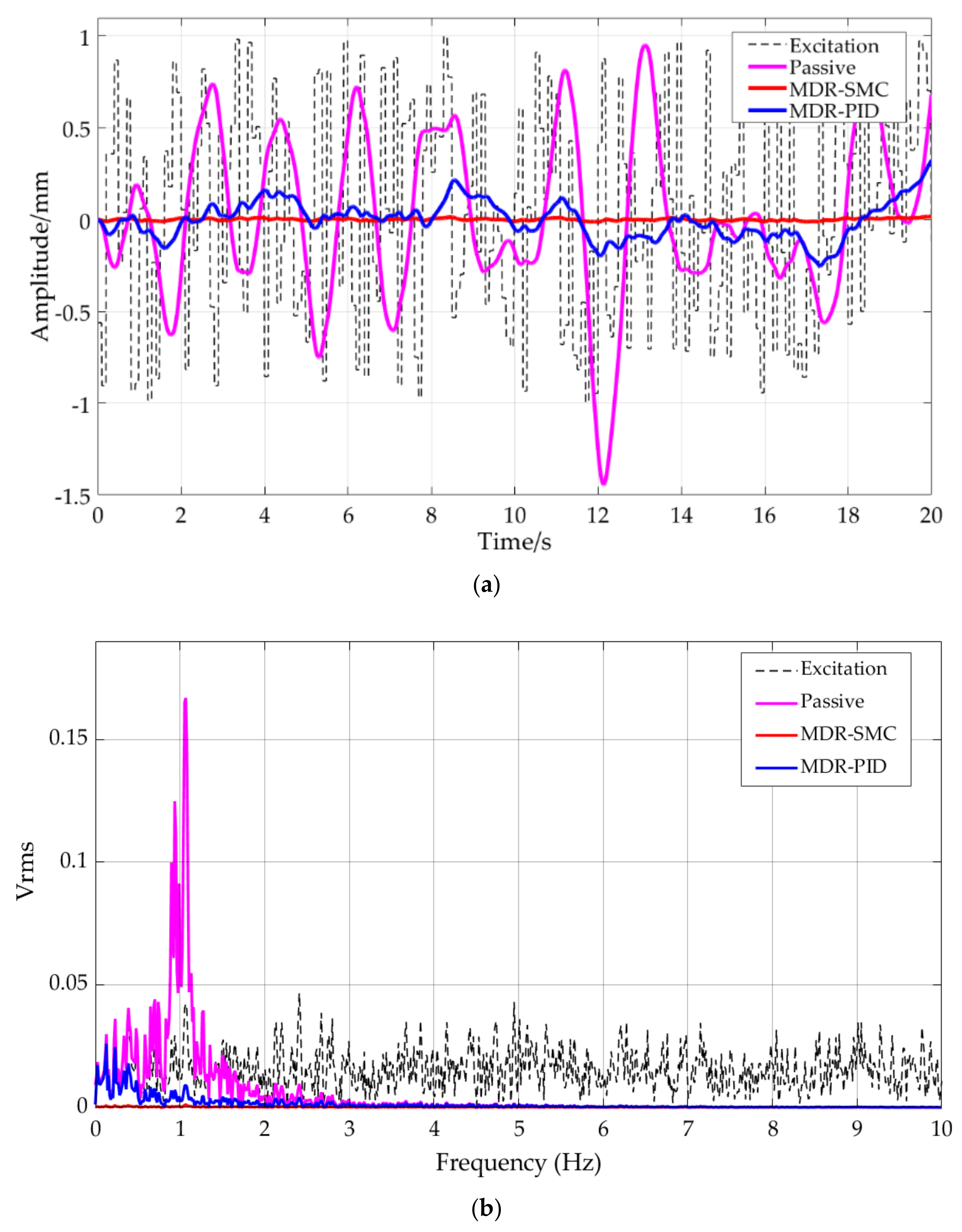
| Name | Value |
|---|---|
| Mass M | 300 kg |
| Stiffness of horizontal spring Kh | 27 N/mm |
| Stiffness of vertical spring Kv | 30 N/mm |
| Vertical damping coefficient c | 0.12 N·s/mm |
| Connecting rod length a | 160 mm |
| Original length of horizontal spring L0 | 200 mm |
| Configurative parameter d | 280 mm |
| Excitation Amplitude Z | 1 mm |
| Parts | Dimension |
|---|---|
| Piston length L | 10 mm |
| Clearance between cylinder and piston h | 2 mm |
| Piston diameter D | 20 mm |
| Effective area of piston under pressure Ap | 100 mm2 |
| Yield viscosity of magnetorheological fluid η | 0.25 |
Publisher’s Note: MDPI stays neutral with regard to jurisdictional claims in published maps and institutional affiliations. |
© 2022 by the authors. Licensee MDPI, Basel, Switzerland. This article is an open access article distributed under the terms and conditions of the Creative Commons Attribution (CC BY) license (https://creativecommons.org/licenses/by/4.0/).
Share and Cite
Zhang, L.; Zhao, C.; Qian, F.; Dhupia, J.S.; Wu, M. An Active Control with a Magnetorheological Damper for Ambient Vibration. Machines 2022, 10, 82. https://doi.org/10.3390/machines10020082
Zhang L, Zhao C, Qian F, Dhupia JS, Wu M. An Active Control with a Magnetorheological Damper for Ambient Vibration. Machines. 2022; 10(2):82. https://doi.org/10.3390/machines10020082
Chicago/Turabian StyleZhang, Laixi, Chenming Zhao, Feng Qian, Jaspreet Singh Dhupia, and Mingliang Wu. 2022. "An Active Control with a Magnetorheological Damper for Ambient Vibration" Machines 10, no. 2: 82. https://doi.org/10.3390/machines10020082
APA StyleZhang, L., Zhao, C., Qian, F., Dhupia, J. S., & Wu, M. (2022). An Active Control with a Magnetorheological Damper for Ambient Vibration. Machines, 10(2), 82. https://doi.org/10.3390/machines10020082








